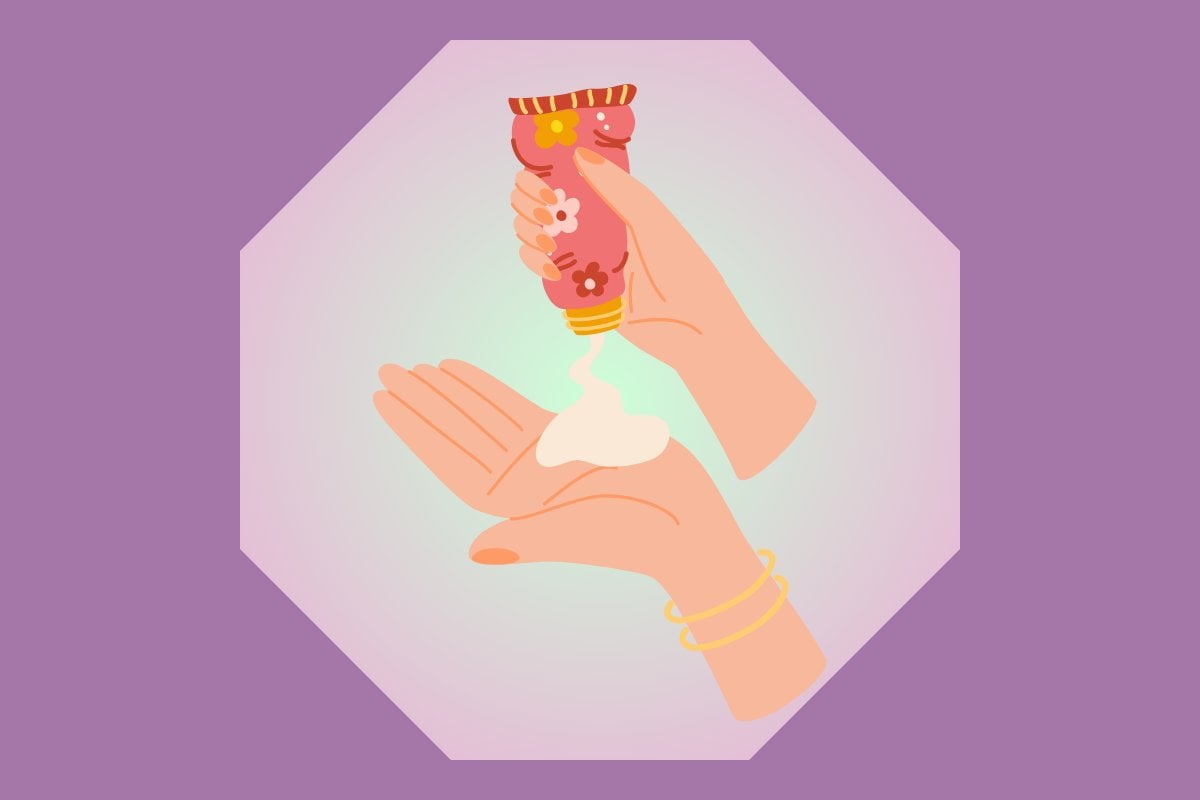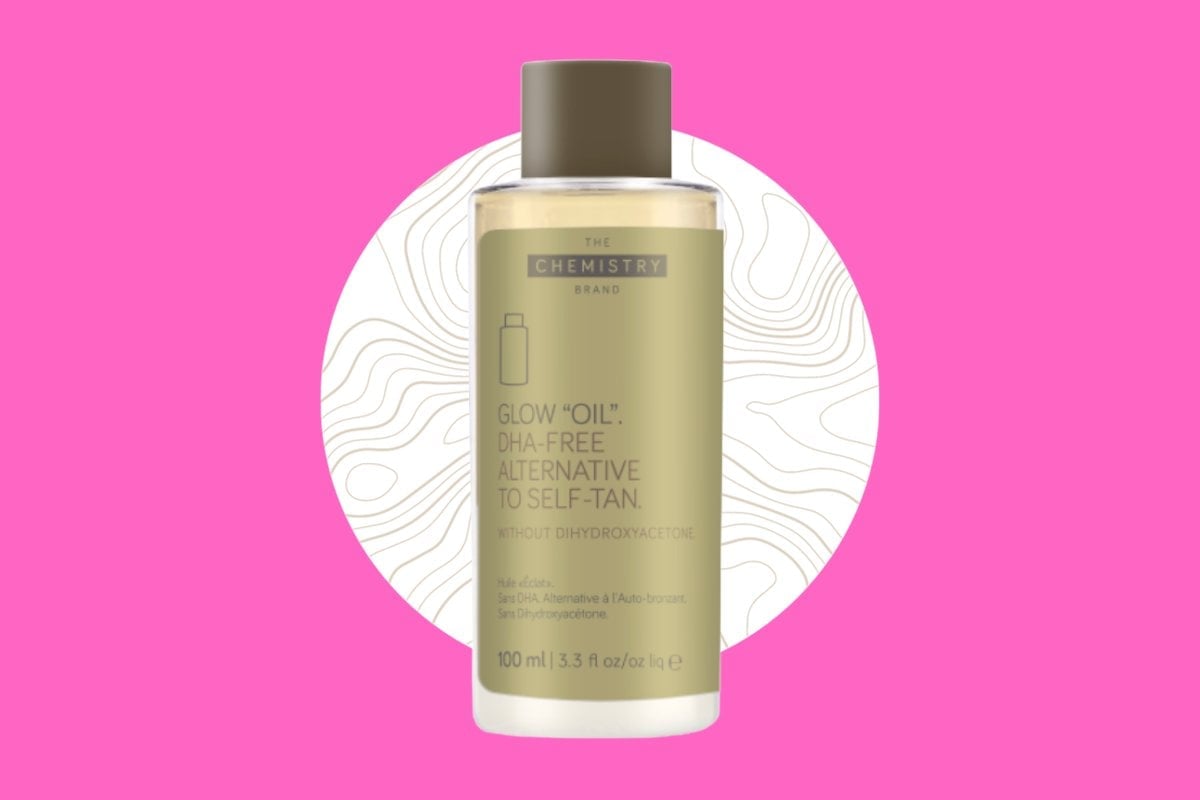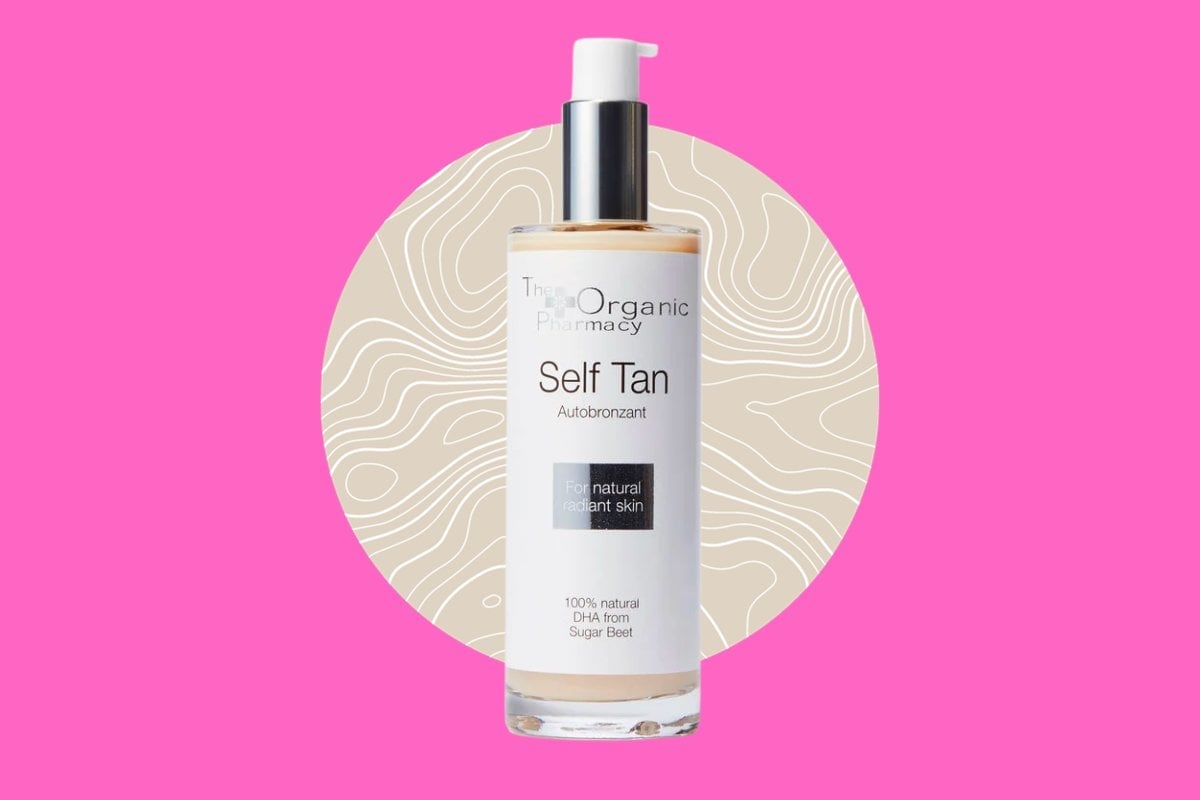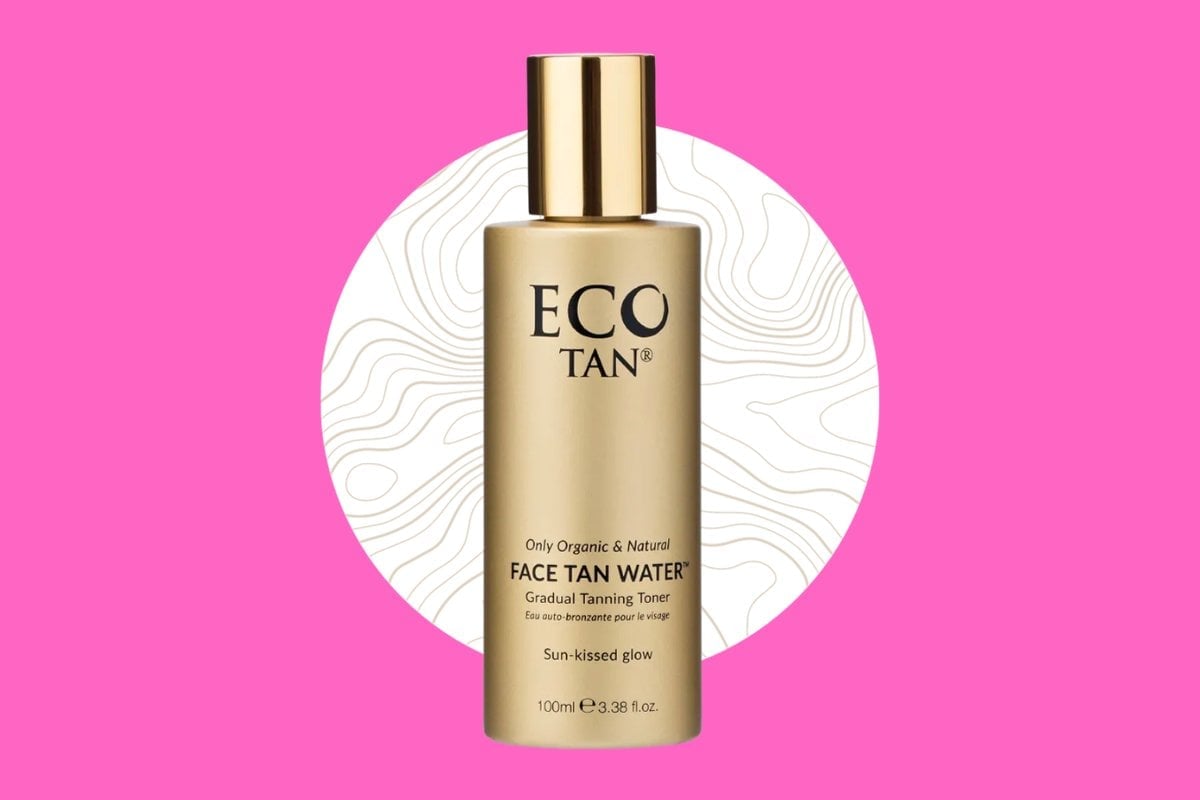
Summer is upon us.
Which, for some of us, means it’s time for certain body parts like our legs and arms to come out and play.
But how to create the ~illusion~ that they have been kissed by the sun despite hiding under a lovely, warming layer of hair all winter (and as much of spring as we could push for?).
Sun in a bottle – otherwise known as fake tan – of course.
Watch: Beauty expert Brittany Stewart shows us how to multimask. Post continues after video.
Self tanners can save us from pastiness in desperate times of need… but while the risk of overdoing it to Oompa Loompa level was once our only fear of self-tanning, it turns out there might be some other risks to be aware of.
Well, for some of us…
When chatting with some girlfriends recently about fake tan, one made a startling revelation.
“I can’t fake tan, it gives me diarrhoea,” she said casually, sipping on her almond milk latte.
Excuse me… what?
Yes – as it turns out, this friend – who is lactose intolerant, may be experiencing an allergic reaction to the chemicals found in some tanning products, and she’s not alone.



Top Comments